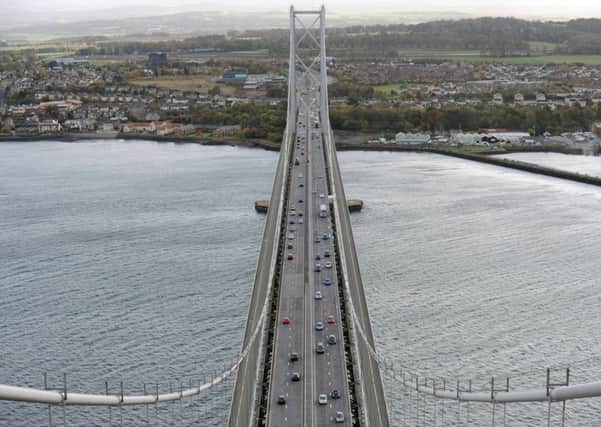Variable speed limits ‘cut Forth Bridge accidents’


Transport officials said the success of the “intelligent transport system” (ITS) on the M90 could be replicated elsewhere.
The number of crashes involving injuries has been cut from 12 a year to two “slight injury” incidents, according to a senior official from the Scottish Government’s Transport Scotland agency.
Advertisement
Hide AdAdvertisement
Hide AdLawrence Shackman, the agency’s project manager for the new Queensferry Crossing, told a meeting organised by the Institution of Civil Engineers Scotland: “The accident rate has been drastically reduced. This bodes well for ITS schemes elsewhere.”
Motoring groups said the result showed the technology should be fitted as standard on new motorways.
The system uses electronic signs on overhead gantries to reduce the speed limit from 70mph to as low as 30mph during heavy traffic or roadworks to maintain a smooth vehicle flow.
Unlike long-established signs on the M8 in Glasgow, the speed limits are mandatory and enforced with cameras.
Mr Shackman said the technology had also reduced journey times by five to eight minutes.
The system, part of the new Queensferry Crossing project, was installed over four miles of the M90 in Fife in December 2012.
Peter Rodger, of the Institute of Advanced Motorists, said: “We know this works to both smooth-out traffic flow and reduce collision rates. It would make sense to use it elsewhere in Scotland.”
Neil Greig, the institute’s Scotland-based policy and resources director, added: “An excellent result and proof that investment in new technology pays off.
Advertisement
Hide AdAdvertisement
Hide Ad“Consistently enforced variable speed limits are the key to ‘smart’ motorways.
“Building in the cameras, detectors and quick response management systems should be standard on all busy Scottish motorways.”
However, the Automobile Association said lower speed limits should operate only when there was a real need, to maintain driver support for the schemes.
President Edmund King said “Variable speed limits used in the right places at the right time generally have the support of drivers and can reduce crashes.
“These systems can help to regulate the flow of congested traffic as well as reducing collisions.
“The problems tend to come when the driver sees no logical explanation for the reduced speed, such as variable speed signs flagging up 40mph and ‘congestion’ when the traffic is free-flowing.
“Hence, if these systems are rolled out in Scotland, they should only be used in the right places at the right time.”
A Transport Scotland spokesman said: “The ITS system on the M90 is still bedding in and it is too early to draw conclusions on the full range of benefits.
“We have no plans to introduce managed motorway schemes on any other roads.”